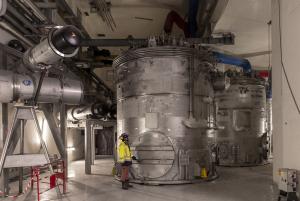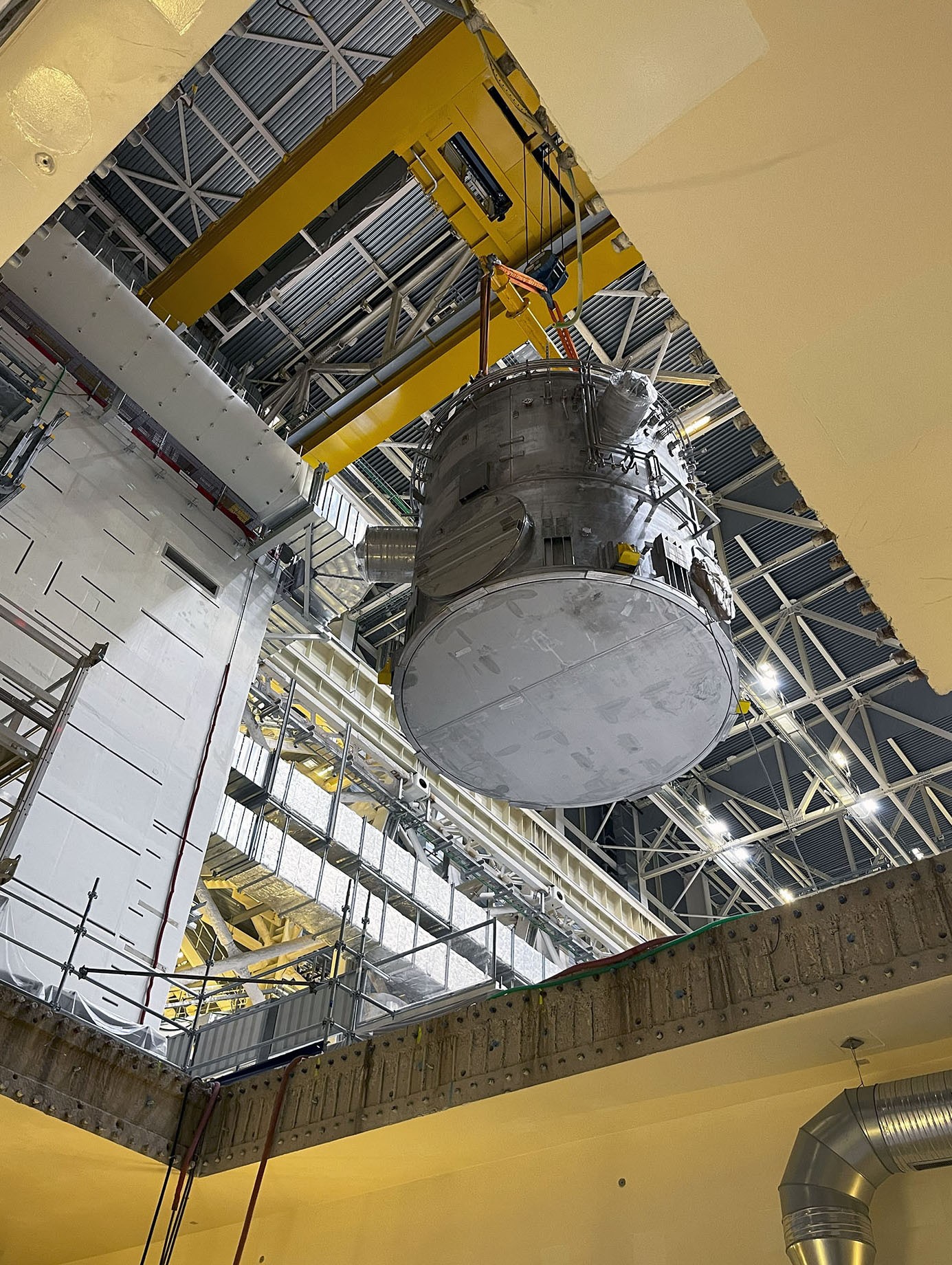One more link in the chain
Providing cryogenic fluids to the superconducting magnets, cryopumps and other "clients" in the ITER machine requires a sophisticated distribution system that ramifies to deliver the cryoplant-originating fluids to their final destinations. Last week, three of the key distribution components, the auxiliary cold boxes, were lifted from the Assembly Hall and positioned inside the Tokamak Building prior to their final installation.
There will be a sum total of five auxiliary cold boxes, all located at Level 3 of the Tokamak Building. Procured by India and designed and manufactured by Linde Kryotechnik AG in Switzerland, the 28-tonne components act like dispatchers, receiving the different fluids from the cryogenic termination cold box located inside the cryoplant and redistributing them throughout the ITER machine. Three have now been delivered; two others are expected next year.
Each of the auxiliary cold boxes serves a specific client, either cryopumps, magnet coils (toroidal field, central solenoid, poloidal field or correction), or magnet supporting structures. Looking like giant cylindrical boilers, the auxiliary cold boxes accommodate a complex network of piping, valves, cryogenic rotating machines, liquid helium phase separators and heat exchangers.
Last week's operation marked an important milestone in the linking of the cryoplant to the Tokamak Building. From producer to consumer, by way of the cryogenic termination cold box and a pair of massive cryolines that will transport the cryogenic fluids over a bridge connecting the two buildings, circuit installation is now progressing steadily.







